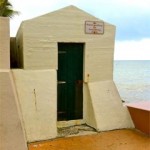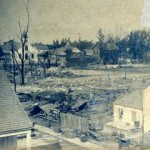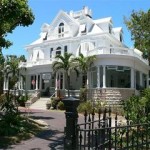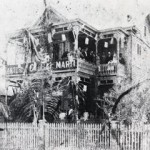Downtown
The Cable Hut
This concrete structure was built on the mainland and transported by Flagler’s railroad to the current location in 1917. Its purpose was to protect the connection between the land line and the 125 mile long underwater telegraph cable lines linking Key West and Havana, Cuba. The first international phone call was made through similar cables in Key West on Christmas Day, 1900. John W. Atkins called Cuba and after a long silence, Cuba answered quite simply “I don’t understand you.â€
1886 Fire
At 2:00 a.m. on April 1, 1886 Key West’s most devastating fire was ignited very symbolically next to the San Carlos Institute, our focal point of Cuban society. The fire decimated the downtown area, burning down 16 major cigar factories, 200+ houses and government warehouses. The blaze is believed to have been started by Spanish spies in an attempt to stop the funding and support Key West had for the Cuban revolutionaries vying for their independence from Spain.
The Curry Mansion
This is the site of two Curry homes. William Curry, Florida’s first millionaire, raised his eight children in the original house built in 1869. His son Milton built the current mansion in 1905 keeping the original kitchen from his father’s house. It is believed that Aunt Sally, William’s house cook, created the first key lime pie when Milton was a young boy. William’s children built seven majestic mansions around Key West in the years to come.
La Terraza de Marti
The home of cigar manufacturer Teodoro Perez will forever be a symbol of Key West’s strong ties to Cuba. On May 3, 1883 Teodoro welcomed Jose Marti, the man who was the symbol of Cuba’s bid for independence from Spain, to speak from his balcony to thousands of Cuban sympathizers. Marti is acclaimed as a national hero of the Cuban Revolution and was an integral factor in freeing Cuba from Spanish rule.
John Dewey House
John Dewey was a world renowned philosopher and educator, arguably one of the most influential men on America’s educational system. From 1938 to 1950 Dewey spent every winter during the twilight of his years in Key West, enjoying the laid back atmosphere and warm weather. Dewey, normally a very driven and productive man, embraced the Key West lifestyle and enjoyed his lazy vacations here stating “The climate here is too relaxing to be conductive to work.†




